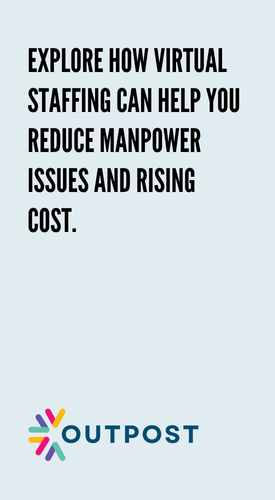Missed appointments don’t just hurt your schedule—they drain your revenue.
You lose hours, waste team energy, and risk frustrating the patients who do show up. And the longer the no-show trend continues, the harder it becomes to recover.
A virtual medical receptionist in Singapore can help stop the leak. The virtual medical receptionist isn’t just about cutting admin costs—they’re trained to keep your patients informed, reminded, and more likely to follow through.
Here’s how a strong setup—and the right person—can reduce no-shows without overwhelming your team.
1. They Send Personal, Timely Reminders That Actually Get Read
Patients ignore cold, generic reminders. But when the message sounds like it’s actually from your clinic? They pay attention.
A virtual medical receptionist can:
- Send WhatsApp or SMS reminders that sound personal
- Time messages properly (e.g., one day and one hour before)
- Confirm replies and note down last-minute cancellations
- Flag unresponsive patients for follow-up
With the right tone, reminders feel like care—not spam. That’s the difference.
2. They Follow Up Immediately When Patients Miss Their Slot
The worst thing after a missed appointment is silence. It tells the patient no one noticed.
A virtual medical receptionist should:
- Follow up the same day a no-show happens
- Offer clear rescheduling options
- Update your system immediately
- Keep track of repeat offenders for internal reference
Even a simple “Hi, would you like to reschedule?” keeps patients from falling off your radar.
3. They Keep the Schedule Clean, Accurate, and Easy to Track
Confusion causes no-shows. If your appointments aren’t confirmed, named, and followed up, don’t be surprised when patients don’t turn up.
With a virtual receptionist managing the calendar:
- All slots get confirmed with names and notes
- Time buffers are added so your team doesn’t run late
- Internal notes (like “first-time visit” or “language support”) are visible
- You get alerted when things look too tight
This is one of the easiest tasks to delegate that has a real impact on your day-to-day flow.
4. They Respond Fast to Rescheduling Requests—So Patients Don’t Drop Off
A missed call or delayed message often leads to one thing: no reply. Then the patient vanishes.
A virtual medical receptionist can:
- Answer WhatsApp, email, or missed call messages fast
- Offer realistic booking options (not just “next available”)
- Confirm the new time right away
- Close the loop by sending a follow-up reminder
The faster the interaction, the more likely the patient stays booked.
5. They Set Expectations Clearly During the First Interaction
No-shows often start with miscommunication. If a patient doesn’t know what’s expected, they’re more likely to forget—or cancel last minute.
During onboarding, your receptionist should be trained to:
- Explain your cancellation policy clearly
- Walk new patients through what to expect
- Share directions or prep notes
- Confirm that everything is understood (not just sent)
This is where training for local healthcare matters. Singapore patients expect clear replies, fast service, and a tone that feels both polite and firm.

6. They Track Repeat No-Shows and Flag Them for Extra Support
Some patients just need more support. If you don’t track them, they fall through the cracks again and again.
Your virtual medical receptionist should:
- Keep internal notes on repeat no-shows
- Highlight patients who need reminder calls instead of texts
- Alert you or your team for extra follow-up when needed
It’s a small system that pays off quickly in fewer gaps and better continuity of care.
7. They Keep It Human—So Patients Don’t Tune Out
One of the biggest mistakes to avoid is relying too heavily on software. Reminder tools help, but they don’t replace human contact.
That’s what a virtual receptionist adds:
- A real voice behind the message
- The ability to notice red flags
- A smoother, more reassuring experience for patients
When a patient feels like someone is looking out for them, they’re more likely to show up.
8. They Get a Proper Setup That Helps Them Do the Job Right
Even a great hire needs structure. Skipping proper onboarding creates delays, mistakes, and frustration for everyone.
Make sure you prep:
- A clear list of responsibilities
- Message templates and tone guides
- Escalation rules for tricky situations
- Sample replies for common patient questions
Some clinics using Outpost start with a 3-day ramp-up plan. That’s often enough to build momentum without overwhelming your new hire.
9. They’re Hired Based on Fit, Not Just Cost
Too many clinics make the wrong hire by focusing only on price. But your receptionist is often the first and last point of contact. That interaction matters.
Key considerations before hiring:
- Have they worked in a medical setting?
- Are they confident with patients, not just admin?
- Can they speak clearly and professionally?
- Do they understand the tools you already use?
You’re hiring someone to represent your clinic. Make sure they can do it well from day one.
10. They Work Alongside (Not On Top of) Your In-Person Team
It’s not fair to ask your in-person staff to onboard someone while handling full-day duties. You’ll get gaps, delays, and avoidable frustration.
Instead, carve out a few hours upfront:
- Walk through the systems
- Review actual patient cases
- Practice tone and response style
- Set a regular check-in schedule
It’s faster in the long run—and your team won’t feel like they’re babysitting.
Conclusion

A virtual medical receptionist doesn’t just fill a role—they fix a system. And when that system works, your patients show up, your schedule stays tight, and your clinic finally feels like it’s under control.
But it only works if you get the setup right. Define the role clearly. Train with intention. Keep communication open. And treat this hire like someone who matters—because they do.




